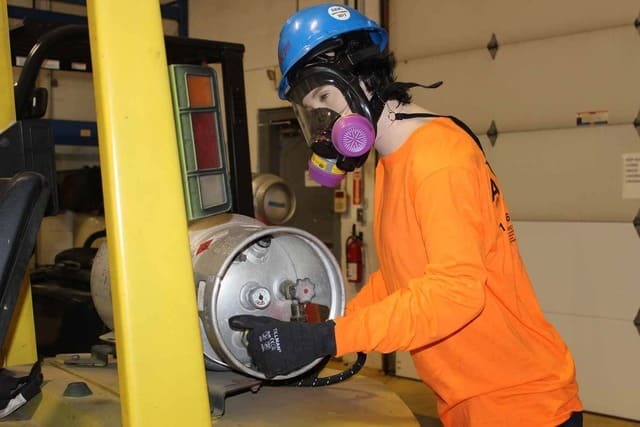Propane is a gas that is turned into a liquid when stored in pressurized cylinders. You should be aware that as the temperature of the fuel tank rises, the liquid fuel expands which increases pressure inside the tank. In cold weather this could result in a fire or explosion if a propane powered vehicle with more than 80% liquid fuel in the fuel tank is brought into a heated building from outside. The increased air temperature in the shop causes increased pressure inside the fuel tank. This will open the safety relief valve if the tank has been overfilled, and the released propane gas can burn if any ignition sources are present. Be sure to be like SafetyEd and check out the propane before operating the vehicle.
Axcess Safety Precautions When Servicing Propane Fuel Vehicles In Cold Weather:
- Before bringing a propane-fueled vehicle indoors for service be sure the propane system is leak-free. In weather above freezing use a soap and water solution to check connections, valves, and lines. In colder weather use a commercial leak detector solution that is available from safety supply houses or use a combustible gas indicator that is calibrated for propane.
- Be sure the fuel tank is not filled beyond the maximum recommended filling capacity (usually 80%). The level of liquid fuel can be checked as follows:
o Park the vehicle on a level area outdoors with no possible sources of ignition nearby. o While wearing neoprene gloves, disconnect the fuel line and briefly open the tank valve. If the container is safely filled, you will hear an audible hiss when the valve is opened. No white fog will appear.
o When the liquid has reached a safe level, recheck all valves, especially the pressure relief valve to be sure there are no leaks before moving the vehicle indoors.
- The fuel lines should be free of fuel when the vehicle is indoors for repairs or servicing. Fuel lines should be charged only when propane is required to operate the engine.
- When repair or service work has been completed, recharge the fuel line.
o If the excess flow valve should close, shut off the tank valve and wait 10 – 15 seconds for the valve to reset. Then, SLOWLY open the tank valve again.
- Be sure to follow all safe operating procedures as recommended by the equipment manufacturer and consult with them, and/or the distributor if you have questions.

